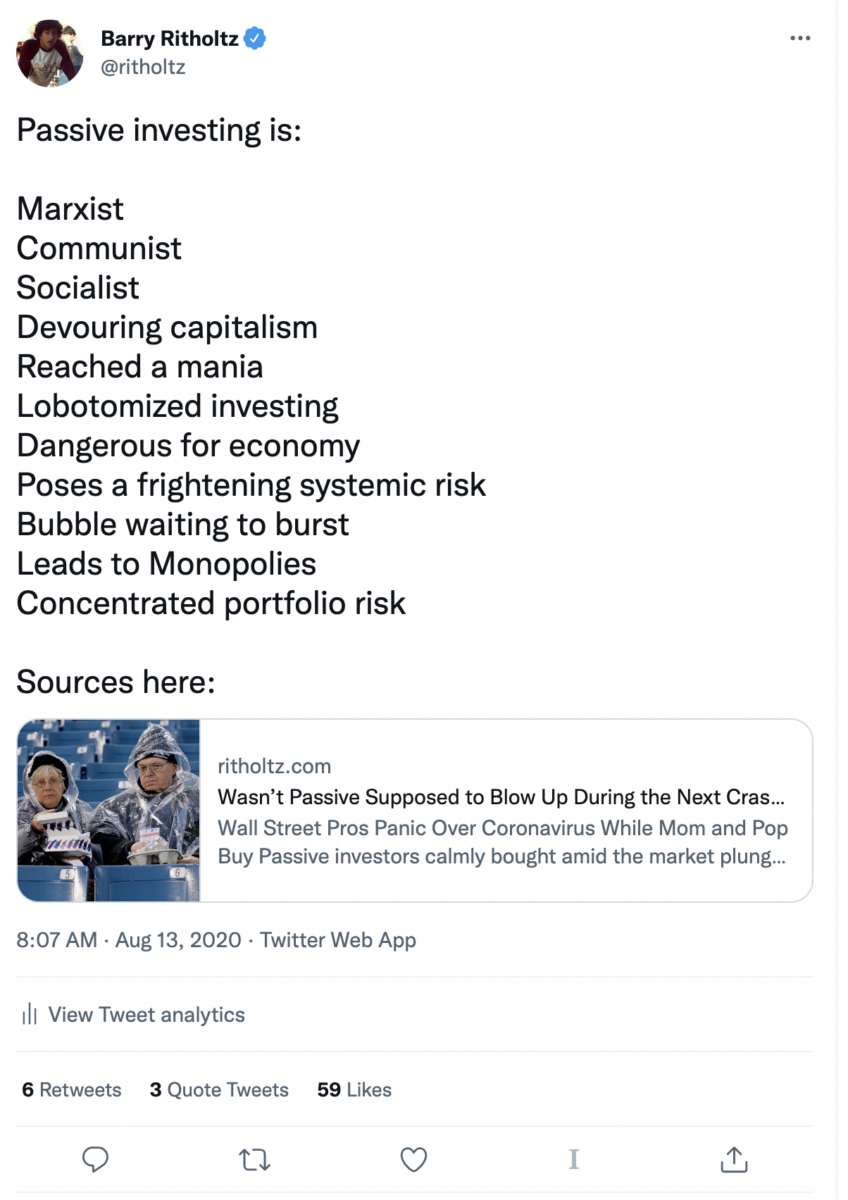Yesterday I spent some time with Eric Balchunas recording a Masters in Business podcast. Balchunas is Senior ETF Analyst for Bloomberg Intelligence and the author of “The Bogle Effect: How John Bogle and Vanguard Turned Wall Street Inside Out and Saved Investors Trillions.”
It’s a fun conversation I’m sure everybody will enjoy.
There are parts of our discussion I thought were obvious, but he convinced me as underappreciated: First and foremost, the intense disruption of low-cost funds and ETFs.
What’s obvious is that cheaper is better than more expensive; that there are inherent costs in managing an active portfolio that include more than just trading and taxes but research, analysis, PMs, etc. Perhaps most important of all, are the behavioral advantages of passive.
Say what you will about the advantages of passive investing, but Eric argues that if a shop like Vanguard had introduced only low-cost active investing (and never focused on passive), it would have grown to become a trillion-dollar colossus regardless.
It’s an interesting thesis that, unfortunately, we cannot test in the real world. It’s certainly possible it might have happened (I remain skeptical). For sure, ETF and fund fees compound over time, and whether or not they are passive or actively managed doesn’t matter. But that is not the same as becoming one of the most dominant asset managers in the world.
Another issue was the “malleability” of belief systems among the academics who research low-cost passive investing. I have been both surprised and disappointed at professors willing to toss out their objectivity/reputation by pushing nonsensical ideas on behalf of the active industry. Given how many billions of dollars low-cost passive has cost the industry – Balchunas estimates it’s now over a trillion dollars – perhaps I shouldn’t be so surprised…
Regardless, a fun conversation (to be posted a week from Friday).
See also:
How Expense Ratios and Star Ratings Predict Success
Russel Kinnel
Morningstar, August 9, 2010
Previously:
Don’t Blame Morningstar for Our Own Shortcomings (October 26, 2017)
Top 10 Investor Errors: Excess Fees (June 30, 2012)
Passive investing is:
Marxist
Communist
Socialist
Devouring capitalism
Reached a mania
Lobotomized investing
Dangerous for economy
Poses a frightening systemic risk
Bubble waiting to burst
Leads to Monopolies
Concentrated portfolio riskSources here:https://t.co/L9RnWNCxQH
— Barry Ritholtz (@ritholtz) August 13, 2020
Can someone explain to me how all of this dislocation and volatility is somehow being caused by low-cost passive indexing?
— Barry Ritholtz (@ritholtz) May 5, 2022
I am still confused over all the hate for low-cost, tax-efficient, long-term successful passive indexing… https://t.co/W7XQTtpcrh
— Barry Ritholtz (@ritholtz) August 11, 2022



